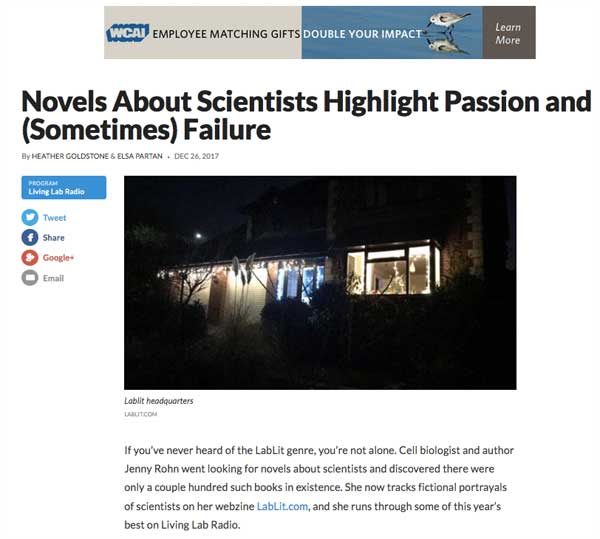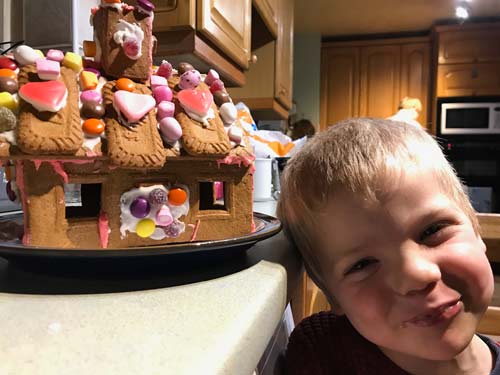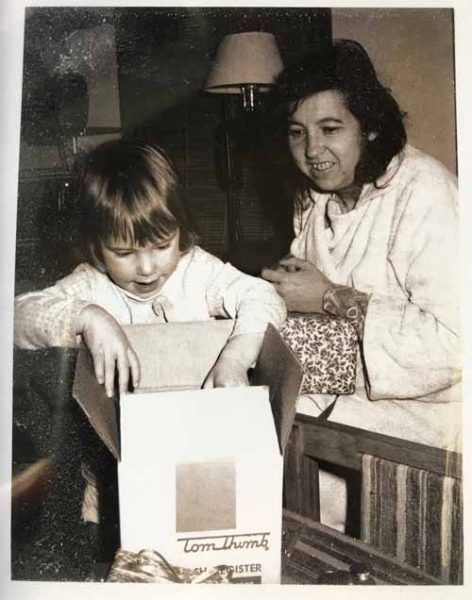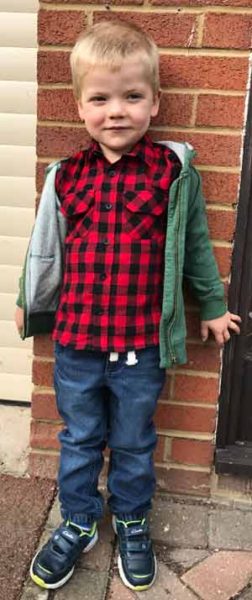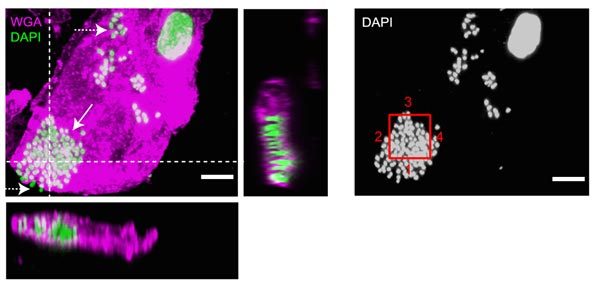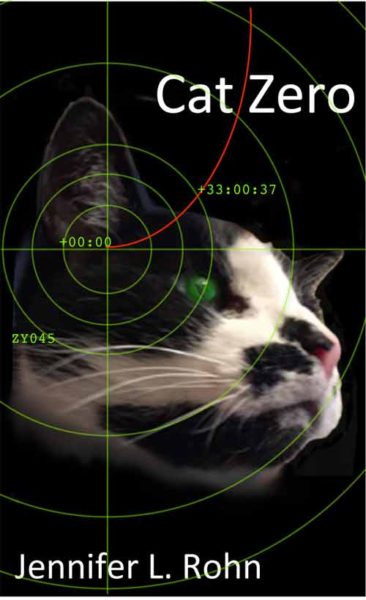
Placeholder cover art…with thanks to Sergei, the neighbour’s photogenic feline
I’m pleased to announce the imminent publication of
my third lab lit novel, Cat Zero, with Bitingduck Press, a science-friendly indie imprint out of Altadena, California.
I have always wanted to write a story starring feline leukemia virus (FeLV), the subject of my PhD research. As viruses go, it’s got great history. Cancer-causing viruses were first described in birds in 1911, but starting in the late 1960s, the cat retrovirus FeLV helped shed light on a number of genes important in mammals. Tumor after tumor revealed hybrid viruses that had physically stolen bits of cat DNA – and these DNAs (known as ‘oncogenes’) were derived from cat genes that play a crucial role in cell growth and division in animal hosts like ourselves.
The rest is history. But after we worked out what was going on in human cells, the viruses themselves fell into disfavor as cancer study models. FeLV had also been of interest as an AIDS model, since it frequently induces immunodeficiency in cats. But the 1986 discovery of feline immunodeficiency virus (FIV) – a virus much more related to HIV – sounded the death knell for poor FeLV. When I joined Julie Overbaugh’s lab in 1990, the body was already twitching. I managed to pinpoint yet another oncogene during the course of my research – Notch2 – but my papers about FeLV are among the last wave of those dealing with the virus as a model for human disease.
I thought it would be an intriguing challenge to set a novel around a laboratory studying FeLV in full awareness that it is a research backwater – and then to have that virus suddenly become incredibly relevant. I also wanted to explore a few other thorny issues: women in science, lab relationships, and uneasy collaborations to name a few. The result is part thriller, part romance, and 100% academic science geekiness. It probably has more hardcore science than either of my previous novels, molecular experiments being integral to solving the mystery. As always, I’m hoping that I achieved the right balance between detail and clarity while always keeping the science accurate.
Compared with my first two novels – written effortlessly while I was on the dole in Amsterdam – this latest tale was more of a struggle. Cat Zero began easily enough in Amsterdam, but then I moved back to the UK in 2003 and my life went a little crazy. Fast-forward to 2009: I finally got to a mental place when I could pick up the half-finished work and propel it over the finish line, but then the draft lay fallow for years more as my complicated life got even more so.

Exhibit B: gratuitous picture of one of the main Complications
One of the biggest, and most interesting, challenges to me as a writer in giving Cat Zero a final edit and polish was the massive changes that have taken place in molecular technologies in the past few decades. The plot relies on DNA sequencing to solve the mystery, and the tech in 2003 was a hell of a lot slower and more expensive. How could I update the methods without scuppering the timing of the plot? Answer: with a few tricks.
Other things had also changed. Certain key train routes radically altered; government entities dissolved and reformed under new names. The National Institute for Medical Research in Mill Hill, home to one of my scenes, closed down a mere two months before my copy was due at the publishers. And instead of writing about Kent from afar as a true-blue Londoner, I now reside in this beautiful green county, and am tickled that my book actually became a prospective homage.
Despite the differences I had to grapple with, most items are thankfully timeless: the passionate drive to discover, the endemic sexism familiar to most female academics, the tensions that crop up in close-knit labs. And above all, the secret, ever-shifting and deceiving world of biology, where truth really is as strange as fiction.
I’ll end this post with a synopsis to whet your appetite. Pre-ordering information will be available soon!

Cats start dying mysteriously on the Isle of Sheppey – and their owners might be next. It’s up to one woman to work out what’s going wrong and how to stop it.
Scientist Artie Marshall is perpetually underfunded, relegated to a damp basement, and besieged on all sides by sexist colleagues. Added to that, she is immersed in a messy divorce. But she’s never been happier: she recently landed her own lab, based in an eclectic think-tank housed in the leafy suburbs of North London.
Artie spends her days studying an obscure cat virus that nobody else in the world seems to have heard of – or cares about. But her arcane little research problem suddenly becomes worryingly relevant as local cats start dropping dead overnight. Matters get worse when people start getting infected too.
Working with her right-hand man Mark, her vet friends and her street-smart technician, Artie races to get to the bottom of the ballooning epidemic. Unexpected assistance arrives in the form of two basement-dwelling mathematicians – a sociopathic recluse and his scary, otherworldly savant mentor. When their mathematical models suggest that the cat plague might actually be more sinister than it first appears, Artie gets drawn into a web of secrets and lies that threatens to blow apart her lab family, undermine her sanity – and endanger her own life.

